Although not harmful, hyperpigmentation can be challenging to deal with and affect your self-confidence. Our cosmetic clinic in Milton Keynes understands this and wants to help you get back on track to healthy and flawless skin! Our guide not only details how to get rid of pigmentation but also the types, causes and signs.
How To Get Rid Of Hyperpigmentation: A LasaDerm Guide
If you’ve noticed that your skin appears darker in some areas regardless of how well you care for your skin, this could be a sign of hyperpigmentation. For many, this can have an immense impact on confidence; however, much like any other skin concern, there are explanations and treatments that will help you achieve a more even complexion.
Have a read of our guide to get to know your skin and all about hyperpigmentation!
- What Is Hyperpigmentation?
- What Causes Hyperpigmentation?
- Best Treatment For Hyperpigmentation
- Does Hyperpigmentation Go Away?
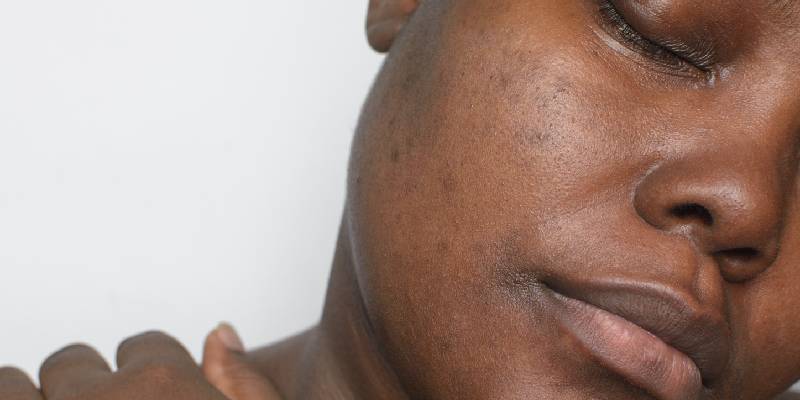
What Is Hyperpigmentation?
This common condition involves your skin darkening more in some areas than others; this can appear as brown, black, grey, red or pink patches. Some people notice these patches all over their body, and others in a particular area, such as the face or hands.
Hyperpigmentation occurs when your melanocytes (pigment-producing cells) overwork and create too much pigmentation. This is typically caused by a trigger, for example, sun exposure or hormonal changes. As the reasons behind hyperpigmentation can vary, it is essential to protect your skin in many different ways daily to avoid patches from flaring up or appearing altogether.
What Does Hyperpigmentation Look Like?
Hyperpigmentation can be spotted in various forms. A few common types of hyperpigmentation are:
- Melasma: Usually seen in women post-pregnancy because of hormonal changes, and commonly appears on the face. Large patches of darkened skin occur in regions of sun exposure.
- Sunspots: Also known as age spots or liver spots, sunspots are caused by lengthy sun exposure that makes flat dark spots appear on the skin.
What Is Post-Inflammatory Hyperpigmentation?
Post-inflammatory hyperpigmentation shows up in spots or patches of darkened skin that occur after an inflammatory skin condition or injury to the skin, such as acne or eczema.
Post-inflammatory hyperpigmentation is the reason specialists always advise you not to pick your spots, as this will only make it worse and prolong the healing process. It can occur anywhere across the body; however, it is most common on the face and neck, especially in acne-prone areas. Unlike other forms of hyperpigmentation, post-inflammatory spots are often irregular and diminish over time with proper skin care and protection.
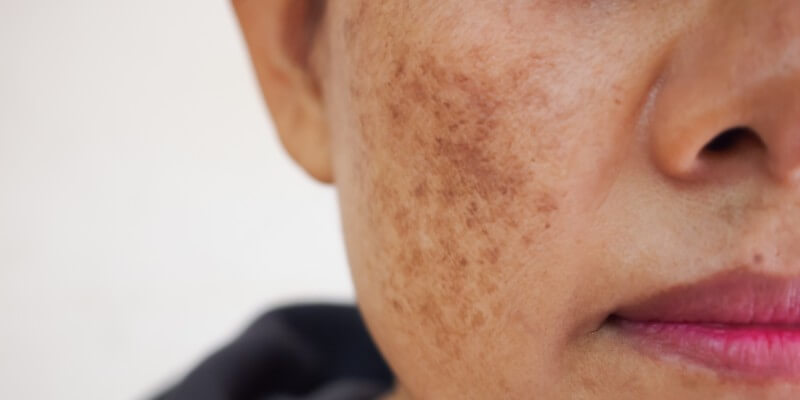
What Causes Hyperpigmentation?
Hyperpigmentation is caused by many different triggers that you may not even realise you are exposing your skin to, such as:
- Excessive sun exposure: The sun is the biggest cause of hyperpigmentation. When our skin is exposed to the sun, our melanocytes naturally stimulate more melanin to protect our skin from burning, causing pigmentation.
- Artificial light: Artificial light, such as light from a light bulb, is also surprisingly a cause of hyperpigmentation; a blue light on phones and computers is also a big trigger in some people.
- Heat: A less known cause is heat, for example, sitting by a fireplace, because it injures your melanocytes, which triggers more melanin production.
- Pregnancy and hormonal changes: Increased estrogen, which often occurs because of pregnancy and birth control pills, can also cause hyperpigmentation. Known as melasma, it occurs mostly in women; however, men can get this due to genetic predisposition and certain medications.
- Acne: This is a major cause of hyperpigmentation; after a spot has gone, it may leave behind a dark patch because of the trauma.
Symptoms Of Hyperpigmentation:
Hyperpigmentation can be easy to spot, and there are a few symptoms that make it noticeable, such as:
- Patches of varying shades
- Discolouration that is noticeable after inflammation or injury on the skin
- Discoloured patches that turn darker after sun exposure
- Raised dark patches that are growing in size
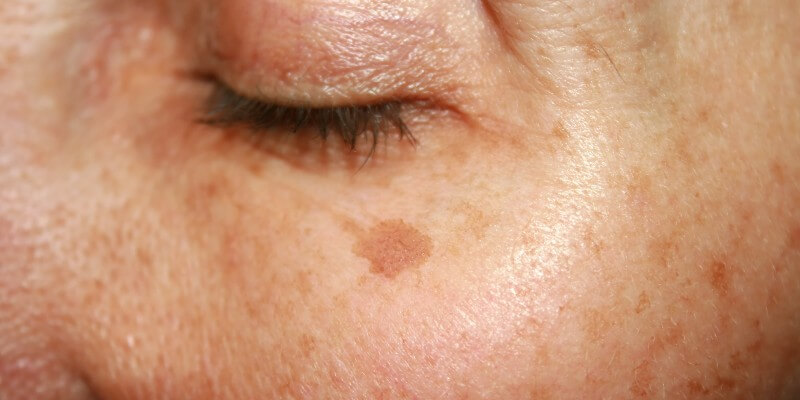
Best Treatment For Hyperpigmentation
Hyperpigmentation can be diagnosed and treated by a skin specialist, who will ask for your medical history and give you a physical exam to determine the cause. Laser treatments and chemical peels are common and popular treatments carried out by professionals.
At our skin clinic in Milton Keynes, we offer many different treatments for hyperpigmentation; these include:
Photorejuvenation:
One of our most popular skin treatments, Photorejuvenation, can help treat patches on your face, neck, and hands. It only takes a few minutes, making it incredibly easy to fit into your schedule. The treatment uses powerful light-based technology to provide a safe, comfortable and non-surgical procedure, ensuring that the surrounding skin is not harmed. It usually consists of four treatments, each four to six weeks apart, and you will see an improvement after each session.
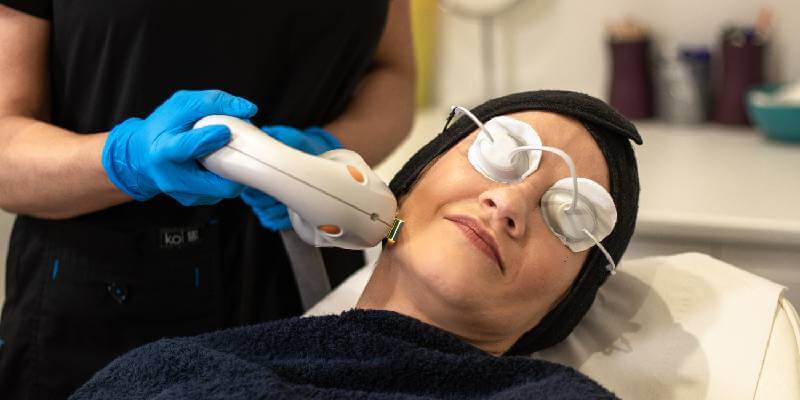
Skin Peels:
Our skin clinic in Milton Keynes specialises in two skin peel types. The first, known as The Perfect Peel, offers instant results and is ideal for reducing dark hyperpigmented spots. It combines Glutathione, a powerful antioxidant, with five low-concentrated fruit acids to achieve a lighter, brighter complexion.
We also offer Elementrē chemical peels to refresh and renew your skin at every level. Light peels gently smooth fine lines, mild acne, and uneven tone, while medium peels target deeper layers to reduce wrinkles, scars, and pigmentation. For more significant concerns like deep wrinkles or precancerous growths, deep peels deliver dramatic results – often in just one treatment.
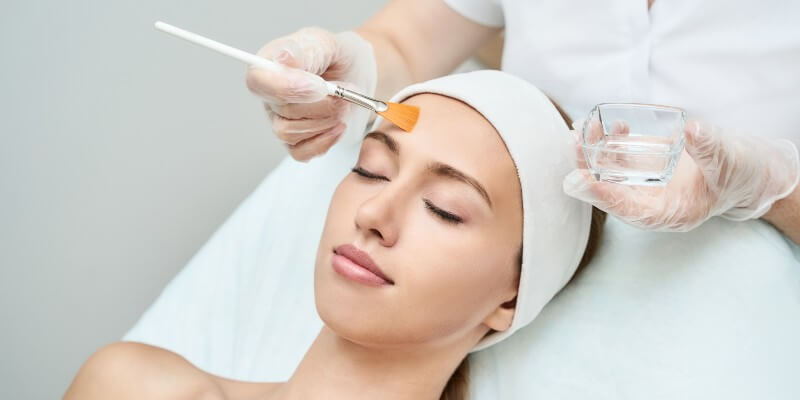
Microneedling:
Microneedling is another much-loved treatment among our clients. Tiny needles are used to create micro wounds to the top layer of skin, which, in return, stimulates the natural healing process. This encourages new skin to form – skin that is not only healthier but also your normal tone. As a result, hyperpigmentation will be dramatically reduced, offering a more even appearance.
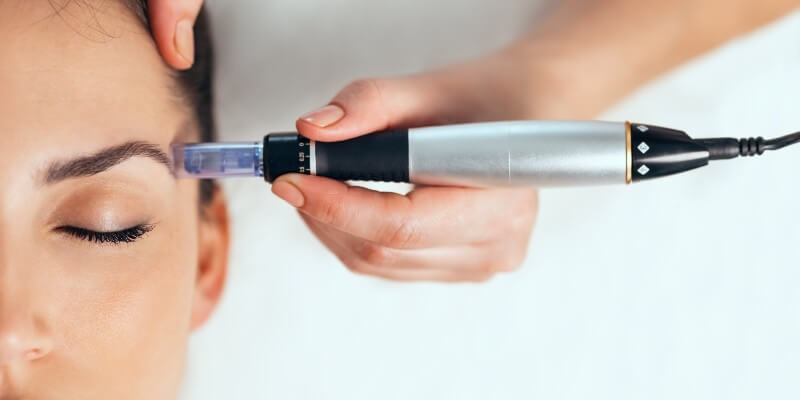
HydraFacial:
Our HydraFacial in Milton Keynes deeply cleanses, detoxes and rejuvenates the skin, helping to repair damaged skin and reveal a new, healthy layer. You may have to return each week for more treatments, but the process lasts only 30 minutes. The HydraFacial consists of three stages, which include:
- Cleanse and peel: Gently exfoliates the skin, revealing the healthy layer
- Extract and hydrate: Extracts congested pores
- Fuse and protect: Uses peptides and antioxidants to enhance and nurture the skin
Contact us if you feel any of these treatments are right for you, and we can work with you to create a tailored care plan!
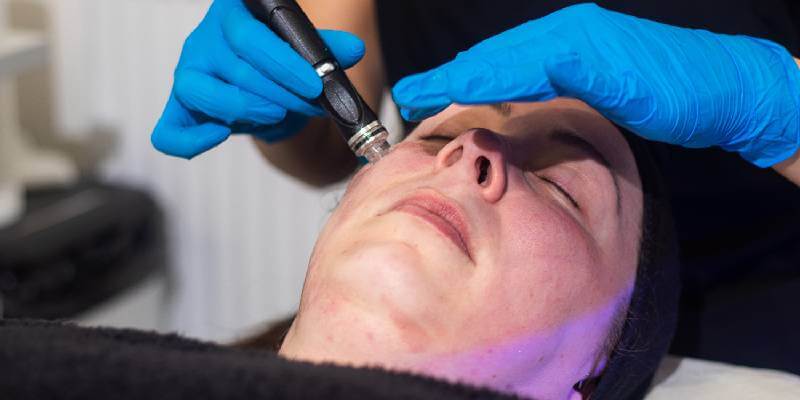
What Helps With Pigmentation?
You can also treat pigmentation by changing your lifestyle, which can involve:
- Physical blocking suncream: Aim to find a product with at least SPF 30 to 50 and zinc oxide as the main ingredient. Use the cream daily, and if you’re out in direct sunlight, make sure to reapply every 2 hours, especially if you’re sweating. If you have melasma, look for a mineral suncream that also includes iron oxide, which can block visible light. Care To Beauty has some great options for the best anti-pigmentation sun protection products.
- Lightening creams: These over-the-counter creams help to decrease hyperpigmentation; they are available in stronger prescription form. Apply them twice, once or twice a day, which will help lighten the dark spots over time.
- Apple cider vinegar: This contains acetic acid, which is like a mild chemical peel. It has helped some with pigmentation, yet there isn’t much evidence to say it does treat hyperpigmentation. If you’d like to use this remedy, mix 1 part apple cider vinegar and 1 part water to the pigmented areas twice a day and then rinse thoroughly after a few minutes. If there is any irritation, stop using this remedy immediately.
- Retinoids: These are some of the oldest skincare ingredients used to penetrate deep into the skin and treat skin layers below the epidermis. Non-prescription formulas aren’t as strong, so you may be unable to see results even after a few months.
- Green tea: Green tea contains an ingredient called EGCG, which is an antioxidant that could block the process that leads cells to produce too much melanin. Taking an oral EGCG supplement or applying a wet green tea bag to the pigmented area for a few minutes each day may help treat it.
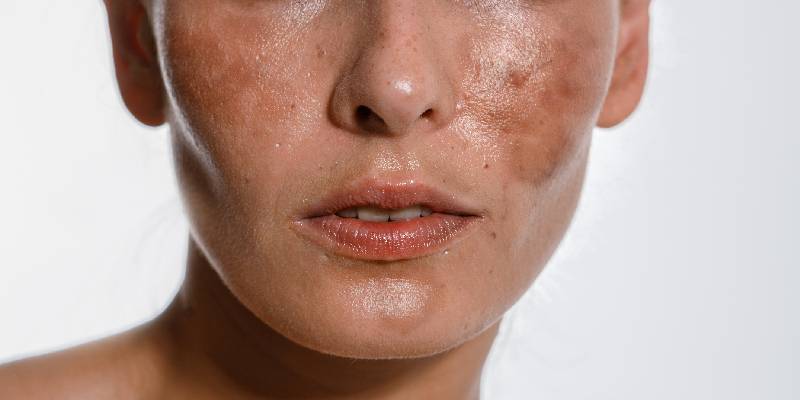
Does Hyperpigmentation Go Away?
Hyperpigmentation can go away on its own without any treatments, but it can take a few months or even years to fade and, unfortunately, will sometimes never go away completely. Other spots could appear over time even if you cleared up the last, especially if you don’t follow the steps needed to protect yourself from the sun and skin damage. The time it takes to fade is determined by the severity of the darkened skin and if it has reached the dermis layer of the skin or stayed at the epidermis layer. However, our excellent treatments will help to shorten the treatment and healing process, making you happy with your skin as soon as possible!
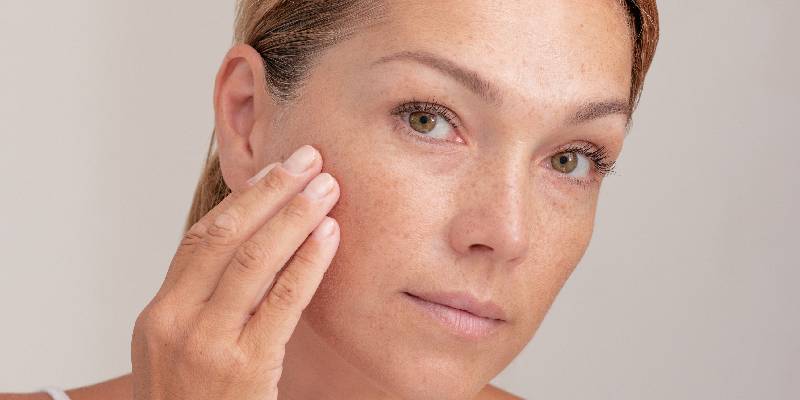
Achieving Your Perfect Skin
When you feel happy in your skin, your confidence radiates. At our cosmetic clinic in Milton Keynes, we ensure that you are paired with the right doctors, therapists, treatments and products to tackle skin concerns and boost your self-esteem. We hope this article has helped you understand your skin, its hyperpigmentation, and the many treatment routes available. To book a consultation, please do not hesitate to contact our friendly team, who will get you started on your tailored treatment plan as soon as possible!
